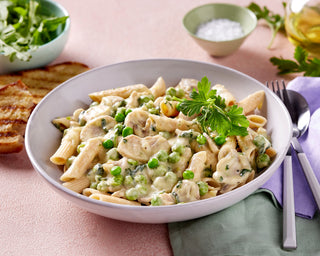Happy Food Safety Week!
As a healthy food manufacturer, we take food safety very seriously here at Dineamic. In light of the Food Safety Week, we thought that'd it would be a great time to share some useful information, especially when it comes to safely defrosting your meals. This year the theme for Food Safety Week is ‘myth busting’. I.e.
Is the ‘five second rule’ really true? (No!) Here are the top myths as listed on the
Food Safety Information Council website:
1. If I get food poisoning it is most likely the last meal I ate. Everyone blames their food poisoning on the last meal they ate but some forms of food poisoning can take days or even weeks to eventuate.
2. You can tell if chicken or minced meat dishes are cooked safely by tasting or if the juices run clear. A thermometer is the only way to know your food is cooked correctly to an internal 75°C. Food poisoning, when mild, is just a bit of gastro. While vomiting and diarrhoea are the most common symptoms, food poisoning in extreme forms can cause reactive arthritis, kidney or nerve damage and hepatitis. Each year food poisoning results in 31,920 hospitalisations, 86 deaths and 1 million visits to doctors.
3. If you are a vegetarian, your risk of food poisoning is low. Food poisoning outbreaks have been caused by fruit and vegetable food items such as rockmelon, frozen berries, semi-dried tomatoes, orange juice, salad items and cooked rice.
4. Homemade mayonnaise and aioli are better than the commercial ones. They might taste better but did you know they are a major cause of food poisoning outbreaks in Australia? If you wish to make your own mayonnaise and aioli, prepare small amounts and use immediately. Adding enough vinegar can also stop any Salmonella that may be present from growing – it does affect the taste, but it makes the product safe. A touch of sugar can reduce the sourness.
5. If you’ve defrosted frozen meat or chicken it can’t be safely refrozen. From a safety point of view it is fine to refreeze defrosted meat or chicken or any frozen food as long as it was defrosted in a fridge running at 5°C or below. You may have lost some quality in defrosting then refreezing as the cells break down a little and the food can become slightly watery. Another option is to cook the defrosted food and then divide into small portions and refreeze once it has stopped steaming.
How to safely defrost food:

— Never defrost food on the benchtop or in an unrefrigerated environment. Doing so increases the risk of bacteria growth and food poisoning. Food should not be left at room temperature for more than two hours. — The safest (but also slowest) way to defrost food is in the fridge. If defrosting in the fridge, place food on the bottom shelf so it doesn’t drip on anything. Food defrosted and kept in the fridge can be safely refrozen, but may lose some quality. — A microwave can also safely be used to defrost food. Make sure that food is defrosted completely and cooked all the way through before consuming. This way is quicker than fridge defrosting, but food should not be refrozen. — If you forget to defrost your food, it is safe to cook from frozen, but you will need to allow 50% more cooking time.





